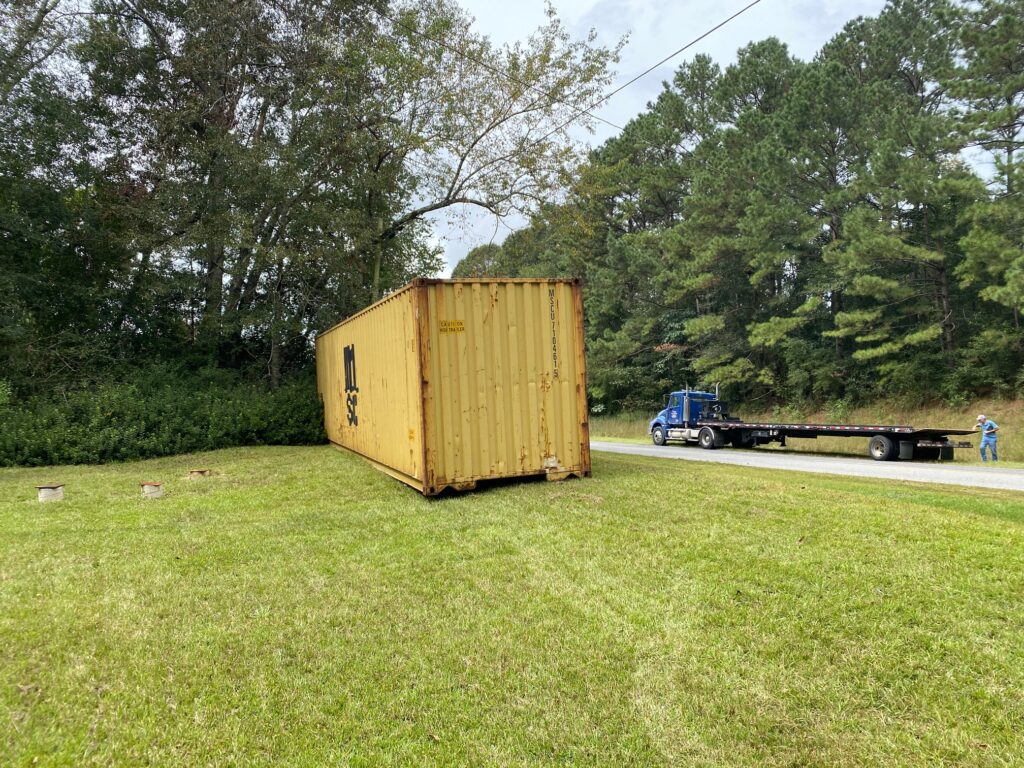With the support piers in place, it was time to buy Container Number One. A funny thing about that…

When we first had the idea for a house from shipping containers, our research gave us an idea of how much the containers would cost. There is a dealer in Ponchatoula, La., which is a little over an hour from our place and the closest seller to us, who quoted his price. It seemed a decent price, not that we knew much. (Calvin had arranged the purchase of a smaller container from these folks a couple of years previously while working for a nonprofit that would use the container for its food bank. So he had a very rough idea of pricing even before we got a quote.)
We moved ahead with the project, first getting those piers in the ground. But as we double-checked container prices, we learned something about the global supply chain and how the coronavirus pandemic has played a part in it.
(The following is a very elementary explanation. Don’t bother writing if you’re going to nit-pick.) Containers are made in China, filled with Chinese goods, and shipped around the world. At ports and supply depots, they wait to be filled with more goods or to be sold.

But do you know what? I’ll let somebody else explain it: here’s a good rundown of the situation. The bottom line for us was that in October 2021 we paid almost double what we would have two years before. There’s no point in griping, though. It is, as they say, what it is.
We discovered with dismay that our dealer in Ponchatoula was out of 40-foot high-cube containers. His shelves were bare, so to speak. Broadening our search geographically, we heard “Sorry, no” again and again. One guy I found through Facebook Marketplace said he had one in Klamath Falls, Oregon, for—get this—$2,000 delivered to Mississippi. That’s a container and 2,400 miles of trucking. I was suspicious, of course, so I called the man. He said his prices were low because of his “personal contacts in China. “OK,” I asked, “but how can you deliver it for that kind of money?” “I also have personal contacts in trucking.”
Amused, I played on. “Can I come up and see it before I buy?” (It’s five hours from where I live in California.) “Sure,” and he gave me the address, which I Googled. It turned out to be a shipping-and-mailbox place, so I asked what was up with that. “That’s my business.” So we made an appointment for the following Saturday.
I tired of the game and left it there, of course not making the drive up to Oregon. Steve never called back.
Eventually we found shipped.com. It looked legit, at least, and I couldn’t find any indication online that they were fishy, but you better believe I was nervous when I clicked the button to send them several thousand dollars for a product sight-unseen. I stayed nervous until Mr. Thibodaux pulled up one day in October with our container. (It had come from New Orleans, which is a seaport and where there are lots of people named Thibodaux.)
We had it dropped off in the front of the yard, near the street, so that when the crane came later to lift it onto its piers there would be the most possible room to maneuver. In the picture below, at the left, some of the piers are visible.
